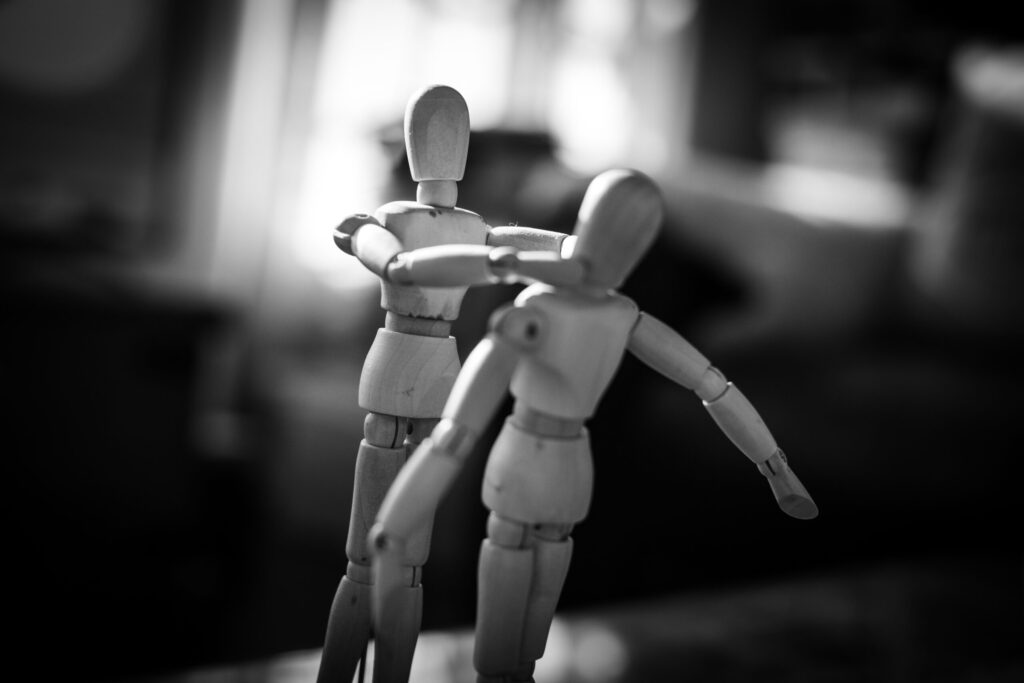A client, let’s call her Agnes, confessed something recently. In the session, she said, “I think I am stuck in a trauma bond.” Like many of today’s psycho-pop words, the term trauma bond has been floating around lately. Calling this type of colloquialism psycho-pop does not diminish its function or potential to help someone learn about themselves. It does, however, require additional exploration on the therapists end to determine the origins of this phrase, understand how it is being used and consider what, if any, treatments exist for someone who may be experiencing a trauma bond.
The term trauma bond comes from Patrick Carnes in his book The Betrayal Bonds. Trauma bonds can happen in all types of relationships, not just romantic relationships. This includes parent-child, friendships, and more.
What is a Trauma Bond?
A trauma bond is among other things, related to the hormonal response that repeated cycles of abuse elicit. The release of cortisol, dopamine and other hormones plays a role in what we seek out as we become used to relying on certain experiences to interpret affection, safety and danger. Our brain and nervous system express certain stress responses as needed based on our interpretation of the event. This becomes a blueprint for how our brain and nervous system. Trauma bonds don’t just refer to the experience of aggression, physical abuse, emotional abuse or otherwise. They encompass the whole of the relationship, including the moments of care present in all relationships.
Some people are more susceptible to this kind of dynamic. People who have lived through adverse childhood experiences, or ACEs, are at a greater risk. If a child was abused by a caregiver (and in this case, abuse does not only mean physical but psychological, emotional or otherwise) it may become a model for how their nervous systems experience relationships in later life.
In cycles of abuse, one thing is often clear; most abusers do not abuse 24 hours a day. There are moments of quiet, laughter, and attention. This is often what makes identifying abuse so complicated for survivors.
Adverse Childhood Experiences and Trauma
What was Agnes’ experience? She grew up the child of a single parent. Her mother was an alcoholic who was rarely present for Agnes. When she was physically there, her mother was either abusive or overly saccharine, telling Agnes that they were best friends. When she got older, Agnes married Joe. Joe was verbally aggressive and often threw things at her when they experienced conflict. Eventually, Agnes had moved out. She still, however, could not decide whether she should give Joe a second chance.
In our last session, when working to explore why Agnes could not let go of Joe even though their relationship had been fraught with aggression and she stated that she was deeply unhappy, she concluded, “I think I am stuck in a trauma bond.”
The Nervous System and Trauma Bonds
Another link to this kind of nervous system response is called intermittent reinforcement. Scratch off cards are a good example of intermittent reinforcement. Winning just sometimes reinforces a desire to keep playing, even though the chances of losing are much higher and the money spent playing will likely accumulate to more than the winnings.
Our body learns to respond to threats in patterned ways: Fight, flight, freeze, or fawn. These nervous system responses are nearly automatic and do not allow for slow, rational processing when a crisis arises. For example, if someone experiences ACEs, these responses become nearly ingrained in their coping mechanisms.
As repeated abuse occurs, any fleeting moment of peace or kindness becomes a moment of survival. It is not uncommon to hold onto that and wait for more.
What keeps Agnes in her dynamic with Joe is the intermittent reinforcement of the positive behavior. When Joe apologizes and brings her flowers, she begins to feel care for him again.
“I know that this is bullshit,” Agnes said, “But so what? Knowing this is bad for me doesn’t help me stop myself.”
Agnes isn’t a bad person for repeating a pattern that helped her survive as a child and in her relationship with Joe. When her mother told Agnes they were best friends, she agreed. When Joe apologized, she accepted. This pattern goes well beyond Agnes’ intentions or immediate control. This is, however, absolutely something Agnes can work on. Bringing awareness to this pattern is but a first step to learning how to work through trauma bonds and eventually, disrupt it.
Carnes, P. (2015). Betrayal Bond: Breaking Free of Exploitive Relationships. Health Communications, Incorporated.






